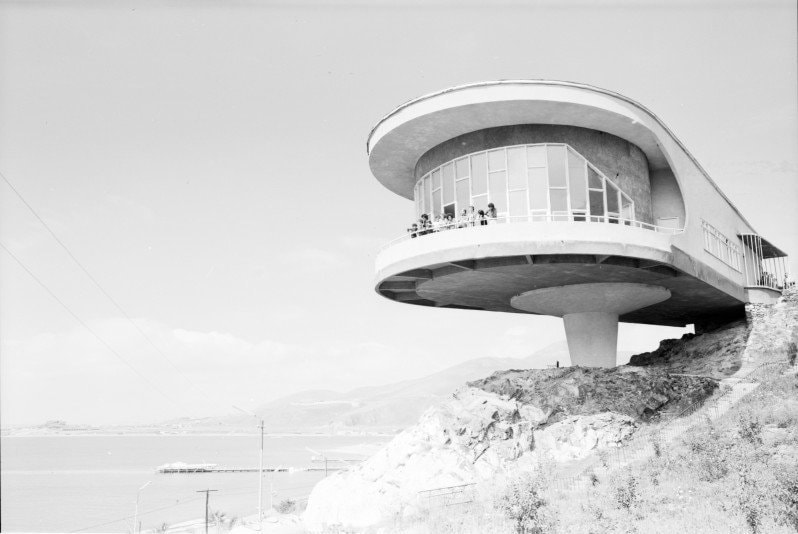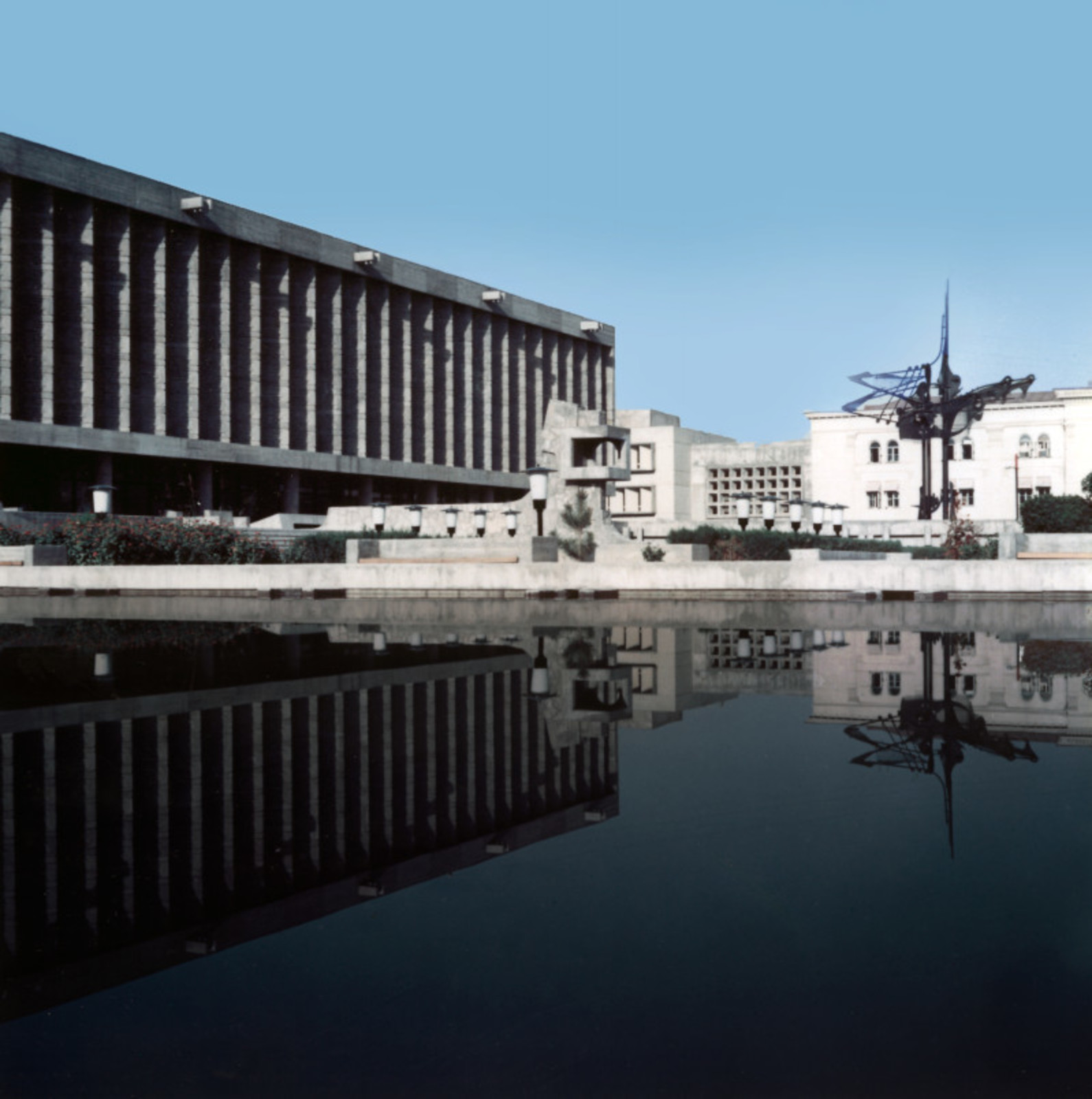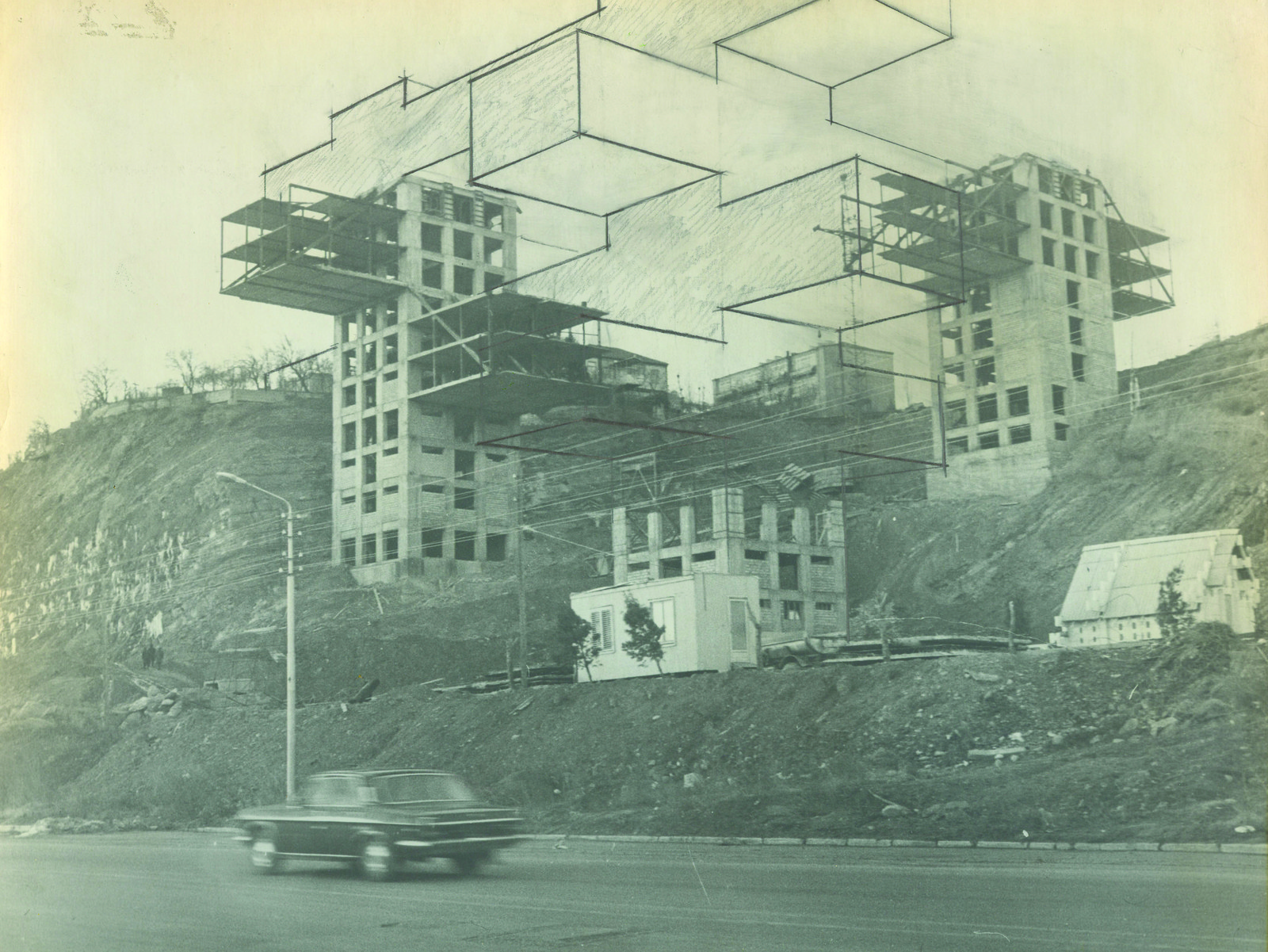All started in the thaw period of the Khrushchev years after Stalin’s death in 1953. The new ideological call for modernization of the country led to an enormous extension of urban space. This continued into the final years of the USSR as economical crisis and dwindling material resources took their toll. The master architecture of Socialist Realism was rejected. A new urbanization was driven by an ideology of scientific and technological progress. It was conceived by local planning offices in each republic and executed to the standardizations of the construction industry. Architects experimented with concepts of international architecture and the legacy of Soviet Modernism of the 1920s. Rapidly an original Soviet language of Late Modernism developed.
But already in the 1960s a critical countermove to this policy of industrialization of space and architecture arose. It took the historical old town as a point of reference. Architects and local elites understood their distance to the official canon of architecture as being a confirmation of their regional – or national – search for identity. Thus an architectural avant-garde, that defied the dominant politics of the central Moscow bureaucracy, was able to form in the republics. Both versions of modernism – the local modern and the Soviet-hybrid – reflected differently positioned modern lifestyles.
In the course of the late 1960s and during the 1970s, there was a paradigmatic shift. Under Brezhnev, the lifestyle of the whole Soviet society had become Westernised. This could be seen in every day life and in the rush for Western commodities, but also in the decline of communist ideologies of a notion of community that architecture and urbanism responded to with singular typologies – from the pioneer camp to the houses of creativity, from the circus to the wedding palace.
The then leading modernist architects continued to build in the International Style and bore the responsibility for monotonous giant housing developments. Policies of industrialization that were heavily promoted by economic planners resulted in far-reaching social consequences. Megalomaniac urban extension projects, catering for up to 100,000 inhabitants, were built throughout the Union. In the same turn the public space was filled with monuments depicting Soviet ideology.
At the end of the decade, the neo-functionalism of the early 1970s was followed by an appellative post-modernism in which the tendency towards petit-bourgeois and national counter-affirmation as a dissociation from the megalomaniac gesture and the ideological bias of Soviet architecture became visible. The perestroika movement of the critical and deconstructive “Paper Architecture” reflected this decline in their artistic utopias.
Almost 25 years after the corrosion of the Soviet Union, still little is known, beyond the former Empire’s borders, about the social fabric that wove it together. Architecture and urbanism have been one of its strongest warps: creating a feeling of social unity and being one of the agents of its dissolution. This continent of architecture, afflicted by inner contradictions that enfolded within an homogenized space, is full of masterpieces waiting to be formally discovered. A Parallel Modernity explores this landscape and an approach of building for a fundamentally different idea of society.
A Parallel Modernity. Soviet Architecture 1956-1991 is dedicated to the legacy of post-war Soviet architecture: to its masters and its specificities, its original styles and erratic buildings. It aims to offer a glance at a still existing void in the canonical history of architecture.
A Parallel Modernity is curated by Georg Schöllhammer, Vienna and Ruben Arevshatyan, Yerevan and designed by Asli and Can Altay / Future Anecdotes, Istanbul
The show has been produced by SALT, Turkey, under the title Trespassing Modernities
Producer: Meric Oner
A Parallel Modernity is generously enabled by IRIS Foundation and Garage Museum of Contemporary Art.



